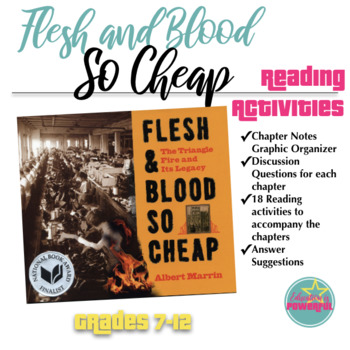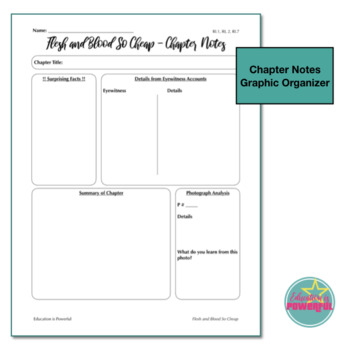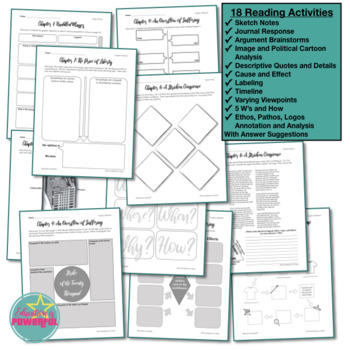Reading Activities for Albert Marrin's Flesh and Blood So Cheap
Education is Powerful
526 Followers
Grade Levels
7th - 10th, Homeschool
Resource Type
Standards
CCSSCCRA.R.1
CCSSCCRA.R.2
CCSSCCRA.R.7
Formats Included
- PDF
Pages
52 pages
Education is Powerful
526 Followers
Learning Objective
Students will identify details, purpose, make inferences, and structure while reading.
Description
Albert Marrin's Flesh and Blood So Cheap is a great non-fiction text to pair with Margaret Peterson Haddix's novel Uprising or any study of workers' rights, the rise of the unions, women's suffrage, and the Triangle Shirtwaist Factory Fire.
Included:
✓Chapter Notes Graphic Organizer
✓Discussion Questions for each chapter with Answers Keys
✓18 Reading activities to accompany the chapters
- Graphic Organizers
- Sketch Notes
- Journal Response
- Argument Brainstorms
- Image and Political Cartoon Analysis
- Descriptive Quotes and Details
- Cause and Effect
- Labeling
- Timeline
- Varying Viewpoints
- 5 W’s and How
- Ethos, Pathos, Logos Annotation and Analysis
✓Answer Suggestions for the Reading Activities
Instructions:
- You will need your own copy of the book Flesh and Blood So Cheap by Albert Marrin. This is a companion set of activities for the book.
- Each chapter has several options for reading activities you can do with your students. You can do them all, assign different tasks to different groups, or pick and choose what you want.
- I’ve included answer suggestions, but many of the graphic organizers could have many different answers; therefore, I have done answer examples/suggestions.
26 pages of reading activities 56 pages total with answer keys and instructions.
★★★★★
This is a great companion for the novel Uprising by Margaret Peterson Haddix.
Total Pages
52 pages
Answer Key
Included
Teaching Duration
N/A
Report this resource to TPT
Reported resources will be reviewed by our team. Report this resource to let us know if this resource violates TPT’s content guidelines.
Standards
to see state-specific standards (only available in the US).
CCSSCCRA.R.1
Read closely to determine what the text says explicitly and to make logical inferences from it; cite specific textual evidence when writing or speaking to support conclusions drawn from the text.
CCSSCCRA.R.2
Determine central ideas or themes of a text and analyze their development; summarize the key supporting details and ideas.
CCSSCCRA.R.7
Integrate and evaluate content presented in diverse media and formats, including visually and quantitatively, as well as in words.





